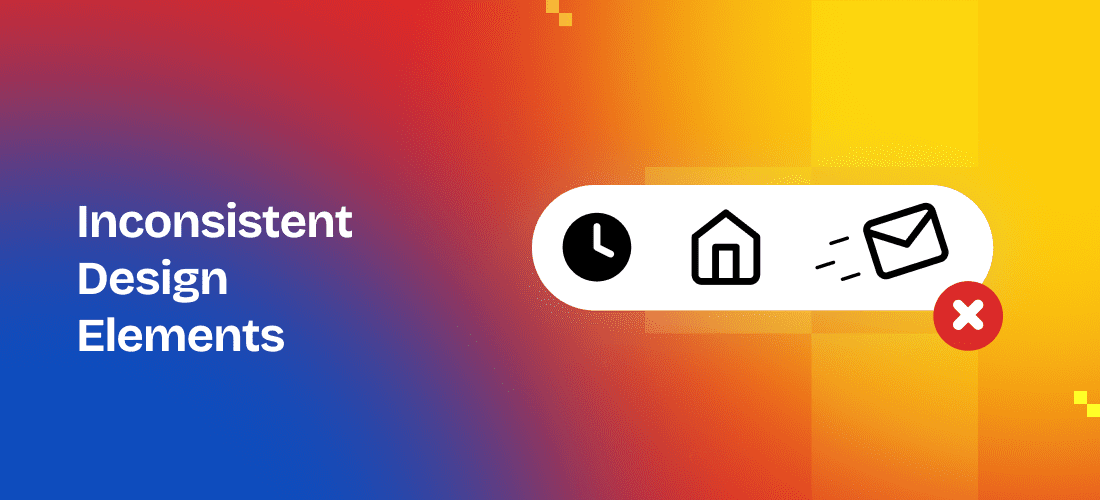
Dec 20, 2024

The goal of UI/UX design is to create an interface that is visually appealing, intuitive, and easy to use. A well-designed user interface can significantly enhance the overall user experience, leading to higher engagement, better retention rates, and increased conversions. However, achieving this balance is easier said than done. Many projects, even those with experienced teams, fall prey to common UI/UX mistakes that can undermine the user experience.
Professional UI UX design services can help you navigate these challenges by providing expert guidance and ensuring that your design meets the highest standards. By understanding and avoiding these common pitfalls, you can create a more effective and user-centric product.
The process of user interface and user experience design is a long and comprehensive one, requiring constant research and optimization. From the first step to launch to maintenance and updation, there are various points where missteps and neglecting important aspects can cause the product to perform poorly. Here’s an exhaustive list of mistakes to avoid when working on the ui/ux designing of any product.

One of the most critical mistakes in UI/UX design is neglecting user research. Designing without a clear understanding of your target audience’s needs, behaviors, and preferences can lead to a product that doesn’t resonate with users. This mistake often results in a disconnect between what the users want and what the product delivers.
Without user research, you’re essentially designing in the dark. You might end up creating features or interfaces that users don’t need or find confusing. This can lead to frustration, higher bounce rates, and lower user satisfaction.
Invest time in conducting thorough user research before starting the design process. This can include surveys, interviews, usability testing, and analyzing user data. Understanding your users’ pain points, preferences, and behaviors will inform your design decisions and help you create a product that truly meets their needs. Professional UI UX design services often have the tools and expertise to conduct this research effectively.
While it might be tempting to showcase your creativity through complex designs and advanced features, overcomplicating the user interface can be detrimental to the user experience. A cluttered or overly intricate interface can overwhelm users, making it difficult for them to navigate and complete tasks.
A complicated interface can confuse users, leading to frustration and abandonment. Users prefer simplicity and clarity; if they can’t find what they’re looking for quickly, they’re likely to leave your site or app.
Focus on simplicity and clarity in your design. Prioritize the most important elements and features, and eliminate any unnecessary distractions. Use white space effectively to create a clean and organized layout. Ensure that the navigation is intuitive and that users can easily find what they’re looking for. Professional UI UX design services can help you strike the right balance between creativity and usability.

In a world where mobile devices account for a significant portion of web traffic, ignoring mobile responsiveness is a critical mistake. A design that looks great on a desktop may not necessarily translate well to a mobile device. If your website or app isn’t optimized for mobile, you risk alienating a large segment of your audience.
Mobile users have different needs and behaviors compared to desktop users. A non-responsive design can lead to poor user experience on mobile devices, resulting in higher bounce rates and lower engagement.
Adopt a mobile-first approach when designing your UI/UX. Ensure that your design is fully responsive, meaning it adapts seamlessly to different screen sizes and devices. Test your design on various devices to identify and fix any issues. UI UX design services often have extensive experience in creating mobile-responsive designs that enhance the user experience across all platforms.

Consistency is key to creating a cohesive and professional user experience. Inconsistent design elements—such as varying font styles, colors, button designs, or navigation patterns—can confuse users and make your product appear unpolished. Inconsistencies can also make it difficult for users to learn and remember how to navigate your product.
Inconsistency in design can disrupt the user experience, making it harder for users to navigate and interact with your product. It can also diminish your brand’s credibility and professionalism.
Establish a design system or style guide that outlines the rules for using design elements consistently across your product. This should include guidelines for typography, color schemes, button styles, iconography, and navigation patterns. Ensure that all team members adhere to these guidelines throughout the design and development process. Professional UI UX design services can help you create and implement a design system that ensures consistency across your product.
Navigation is one of the most important aspects of UI/UX design. If users can’t easily find what they’re looking for, they’re likely to become frustrated and leave your site or app. A poorly designed navigation structure—whether it’s overly complex, hidden, or unintuitive—can significantly impact the user experience.
Complicated or unclear navigation can lead to a high bounce rate and a negative user experience. Users expect to find information quickly and easily; if they have to work hard to navigate your product, they’re likely to abandon it.
Design your navigation with the user in mind. Keep it simple, intuitive, and easily accessible. Use clear labels and organize content logically. Consider using breadcrumbs, dropdown menus, and search functionality to help users find what they need. Conduct usability testing to identify any issues with navigation and make necessary adjustments. UI UX design services can assist in creating a user-friendly navigation structure that enhances the overall experience.
Users need feedback to understand the outcome of their actions. Whether it’s clicking a button, submitting a form, or completing a transaction, providing clear feedback reassures users that the system has registered their actions. A lack of feedback can leave users uncertain and frustrated, leading to a poor user experience.
Without feedback, users may not know whether their actions were successful, leading to confusion and frustration. This can result in errors, repeated actions, or abandonment of the task.
Incorporate visual and auditory feedback into your design to guide users through their interactions. This can include changing the color of a button when clicked, displaying confirmation messages, or providing progress indicators. Ensure that feedback is timely, relevant, and clear. Professional UI UX design services can help you integrate effective feedback mechanisms into your design.
Accessibility is a crucial aspect of UI/UX design that ensures your product is usable by people with disabilities. Overlooking accessibility can exclude a significant portion of your audience and lead to legal and ethical issues. Accessible design not only benefits users with disabilities but also improves the overall usability of your product.
Failing to consider accessibility can alienate users with disabilities, leading to a poor user experience and potential legal ramifications. It also reflects poorly on your brand’s inclusivity and social responsibility.
Incorporate accessibility best practices into your design process. This includes using appropriate color contrast, providing alternative text for images, enabling keyboard navigation, and designing with screen readers in mind. Conduct accessibility testing to identify and fix any issues. UI UX design services are well-versed in accessibility standards and can help you create a more inclusive product.
Information overload occurs when users are presented with too much content at once, making it difficult for them to process and retain information. This can lead to confusion, frustration, and ultimately, a poor user experience. A common mistake in UI/UX design is trying to pack too much information into a single page or screen.
Overloading users with information can overwhelm them, leading to cognitive overload and decision fatigue. This can result in users abandoning the task or failing to complete it correctly.
Prioritize the most important information and present it in a clear, concise, and organized manner. Use visual hierarchy to guide users’ attention to the most critical elements. Break down complex information into manageable chunks, and use progressive disclosure to reveal additional details as needed. Professional UI UX design services can help you streamline your content and create a more user-friendly experience.

One of the most critical mistakes in UI/UX design is failing to test and iterate on your design. Even the best designs can have flaws that only become apparent through user testing. Skipping this step can lead to a product that doesn’t meet users’ needs or expectations.
Without testing, you risk launching a product with usability issues, bugs, or design flaws that could have been identified and addressed during the design phase. This can lead to costly revisions, poor user experience, and negative reviews.
Incorporate usability testing into your design process, both during the prototyping stage and after the product is live. Gather feedback from real users and use it to make informed design decisions. Iterate on your design based on testing results, and be willing to make changes to improve the user experience. UI UX design services often include testing and iteration as part of their process, ensuring that the final product meets user needs and expectations.
Microinteractions are the small, often subtle, interactions that occur within a user interface. They include things like button animations, hover effects, and notification alerts. While they may seem minor, microinteractions play a significant role in enhancing the overall user experience.
Ignoring microinteractions can lead to a static, lifeless interface that fails to engage users. Well-designed microinteractions provide feedback, guide users, and add a layer of delight to the user experience.
Pay attention to the details in your design, including how elements behave when users interact with them. Incorporate subtle animations, transitions, and feedback mechanisms that enhance usability and add personality to your interface. Professional UI UX design services can help you design and implement effective microinteractions that elevate the user experience.
Also Read – UI UX design for Beginners
Creating a successful user interface and user experience requires careful planning, attention to detail, and a deep understanding of your users’ needs. By avoiding common UI/UX mistakes—such as neglecting user research, overcomplicating the interface, ignoring mobile responsiveness, and failing to test and iterate—you can create a product that is both visually appealing and highly functional.
Professional UI UX design services play a crucial role in helping businesses navigate these challenges and create user-centric designs that drive engagement and conversions. Whether you’re launching a new product or revamping an existing one, investing in professional UI UX design services can make all the difference in achieving your project’s goals.